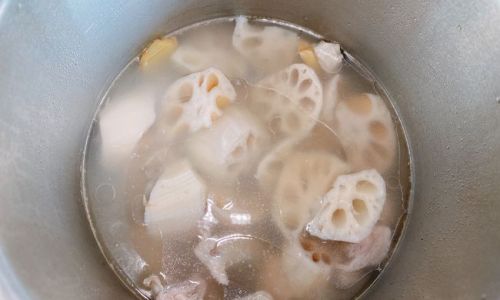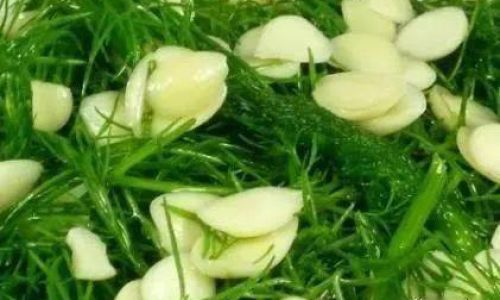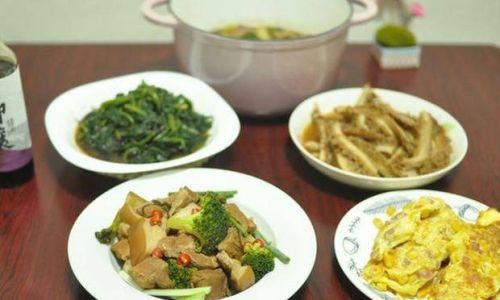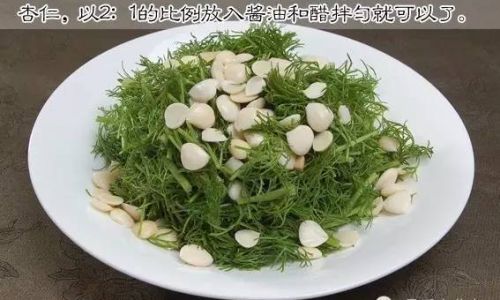Introduction
Sweet and sour lotus root slices, a beloved dish in Asian cuisine, blend crispy texture with a harmonious balance of tangy and sugary flavors. This versatile recipe, rooted in traditional Chinese cooking techniques, has transcended borders to become a global favorite. Whether served as an appetizer, side dish, or main course, this dish captivates diners with its vibrant colors, satisfying crunch, and addictive glaze. In this comprehensive guide, we will explore the history, ingredients, and precise methods to recreate this culinary masterpiece in your own kitchen. From selecting the freshest lotus roots to mastering the art of caramelization, this article equips both novice cooks and seasoned chefs with the knowledge to elevate their stir-fry game.

The Allure of Lotus Root
Lotus root, scientifically known as Nelumbo nucifera, is a rhizome celebrated for its nutritional density and culinary versatility. Native to Asia, this aquatic vegetable thrives in muddy ponds and rivers, where it develops a distinctive appearance—a series of air chambers running lengthwise, resembling a ladder. When sliced, these chambers create a delicate lace-like pattern, making lotus root a visually stunning addition to any plate. Beyond its aesthetic appeal, lotus root is prized for its crisp texture, which remains intact even after cooking, and its mild, slightly sweet flavor that pairs beautifully with bold seasonings.
Cultural Significance
In Chinese culture, lotus root symbolizes purity, harmony, and prosperity due to its association with the lotus flower, which emerges unblemished from murky waters. During festivals like the Lunar New Year, lotus root dishes are often served to invite good fortune. The vegetable’s porous structure also represents the interconnectedness of family and community, making it a meaningful centerpiece at gatherings.
Ingredients: Quality Matters
To achieve authentic sweet and sour lotus root slices, sourcing the finest ingredients is non-negotiable. Here’s a breakdown of the key components:
-
Lotus Root (2 medium-sized roots):
- Select firm, unblemished roots with smooth, pale beige skin.
- Avoid specimens with soft spots or darkened edges, as these indicate age or spoilage.
-
Sweet and Sour Sauce Base:
- Rice Vinegar (¼ cup): Provides the signature tanginess; avoid distilled vinegar for a milder flavor.
- Sugar (3 tbsp): Use granulated white sugar for caramelization, or substitute with brown sugar for a molasses-like depth.
- Soy Sauce (1 tbsp): Opt for light soy sauce to avoid overpowering the dish’s balance.
- Ketchup (2 tbsp): Adds sweetness and a subtle tomato undertone.
- Pineapple Juice (¼ cup, optional): Enhances tropical sweetness; fresh or canned juice works.
-
Aromatics and Seasonings:
- Garlic (3 cloves, minced): Infuses the dish with pungent warmth.
- Ginger (1-inch piece, grated): Adds a zesty, floral note.
- Red Chili Flakes (½ tsp): Adjust to taste for heat.
- Sesame Oil (1 tsp): Imparts a nutty aroma.
-
Thickening Agents:

- Cornstarch (1 tbsp): Mixed with water to create a glossy sauce.
- Water (2 tbsp): For the cornstarch slurry.
-
Cooking Oil:
- Vegetable Oil (2 tbsp): Use a neutral oil with a high smoke point, such as peanut or canola.
-
Garnishes:
- Sesame Seeds (1 tsp): Toasted for crunch.
- Green Onions (2 stalks, sliced): Adds freshness and color.
Equipment Essentials
- Sharp Chef’s Knife: Essential for slicing lotus root into uniform thickness.
- Mandoline Slicer (optional): Ensures even, paper-thin slices.
- Wok or Large Skillet: High sides prevent splattering during stir-frying.
- Wooden Spatula: Gentle on cookware and effective for tossing ingredients.
- Small Bowl: For preparing the cornstarch slurry.
Step-by-Step Preparation
Preparing the Lotus Root
- Peeling:
- Trim both ends of the lotus root.
- Use a vegetable peeler to remove the thin, fibrous outer layer. Work carefully to avoid wasting flesh.
- Slicing:
- Cut the root crosswise into ¼-inch thick slices. For a decorative touch, angle the knife slightly to create oval shapes.
- Pro Tip: Soak sliced lotus root in a bowl of water with 1 tbsp of vinegar for 10 minutes. This prevents browning and removes excess starch, ensuring a crisper texture.
Blanching (Optional but Recommended)
- Bring a pot of water to a rolling boil.
- Add lotus root slices and blanch for 2 minutes.
- Drain and rinse under cold water to halt cooking.
- Why Blanch? This step softens the raw edge while preserving crunch, reducing cooking time, and ensuring even sauce absorption.
Crafting the Sweet and Sour Sauce

- In a small bowl, whisk together rice vinegar, sugar, soy sauce, ketchup, and pineapple juice (if using).
- Taste and adjust seasonings: Add a pinch of salt if needed, or extra sugar for sweetness.
- Secret to Balance: The sauce should taste vibrantly tangy-sweet before cooking, as caramelization will mellow the flavors.
Stir-Frying Technique
- Heating the Wok:
- Place the wok over high heat until a drop of water evaporates instantly.
- Add oil and swirl to coat the surface.
- Sautéing Aromatics:
- Reduce heat to medium, add garlic, ginger, and chili flakes.
- Stir-fry for 30 seconds until fragrant but not browned.
- Adding Lotus Root:
- Increase heat to high and add blanched slices.
- Toss vigorously for 2 minutes to coat with oil and aromatics.
- Sauce Application:
- Pour the prepared sauce over the lotus root.
- Stir continuously for 1-2 minutes until the sauce thickens and glazes the slices.
- Thickening:
- Mix cornstarch with water to create a slurry.
- Drizzle into the wok while stirring. The sauce will become glossy within 30 seconds.
- Finishing Touch:
- Drizzle with sesame oil and toss to combine.
- Remove from heat immediately to prevent overcooking.
Plating and Presentation
- Transfer to a serving platter.
- Garnish with toasted sesame seeds and sliced green onions.
- For added flair, arrange slices in a overlapping pattern to showcase their lace-like texture.
Mastering Texture and Flavor
Crispness Retention
- Avoid overcrowding the wok; cook in batches if necessary.
- Serve immediately, as lotus root softens slightly upon standing.
Sauce Consistency
- The ideal sauce coats the back of a spoon without being gluey. Adjust cornstarch if needed.
Flavor Customization
- Spicy Variation: Add 1 tbsp of Sriracha or fresh chili peppers.
- Fruity Twist: Include diced pineapple or mango chunks during stir-frying.
- Umami Boost: Stir in 1 tsp of oyster sauce or hoisin sauce.
Troubleshooting Common Pitfalls

-
Mushy Lotus Root:
- Overcooking is the primary culprit. Blanch for no more than 2 minutes, and stir-fry briefly.
- Avoid using frozen lotus root, which releases excess moisture.
-
Bland Sauce:
- Taste and adjust seasonings before cooking. Once caramelized, flavors become less adjustable.
-
Oily Residue:
Use just enough oil to coat the wok; excess oil will make the dish greasy.
-
Scorched Sauce:
Maintain high heat but stir constantly to prevent burning.
Health Benefits of Lotus Root
Beyond its culinary appeal, lotus root is a nutritional powerhouse:

- Dietary Fiber: Aids digestion and promotes gut health.
- Vitamin C: Boosts immunity and skin health.
- Potassium: Regulates blood pressure and fluid balance.
- Iron: Supports red blood cell production.
Serving Suggestions
- As an Appetizer: Pair with steamed dumplings or spring rolls.
- With Rice: Serve over jasmine rice for a comforting meal.
- In Noodle Bowls: Toss with chilled soba noodles and veggies.
- As a Side: Complement grilled meats or tofu dishes.
Cultural Adaptations
- Korean Twist: Add gochujang (fermented chili paste) for a spicy-sweet kick.
- Vietnamese Fusion: Incorporate lemongrass and fish sauce.
- Indian-Inspired: Sprinkle with chaat masala and fresh cilantro.
Conclusion
Sweet and sour lotus root slices are more than a dish—they are a celebration of texture, flavor, and tradition. By mastering the nuances of preparation, from selecting the freshest ingredients to perfecting the caramelization of the sauce, you unlock a culinary experience that delights the senses and honors centuries of gastronomic heritage. Whether you’re a home cook seeking to impress dinner guests or a curious foodie expanding your repertoire, this recipe offers a gateway to the artistry of Asian cooking. So, don your apron, gather your ingredients, and embark on a journey to create a dish that is as visually stunning as it is delicious. Your taste buds—and your guests—will thank you.






0 comments